Ah, music! We dance to it when we’re happy, we focus on it to get in the zone, we use it to process emotions and as therapy for our souls. If you ask any one of us at designdough where we store and stream the soundtrack of our lives, you’ll get the same answer: Spotify. And if you’re not one of the other 170 million people who use it, you’ll almost definitely have heard of it.
History
Developed in the wake of generation Limewire (where computer viruses and low quality music were welcomed in the name of free songs), Spotify was later launched in 2008 by Daniel Ek and Martin Lorentzon in Stockholm, Sweden.
With a clear call for ‘free’ music, Spotify offered a no cost subscription service with just one catch: Ads. For those, who like us, can’t bare the surprise shampoo break when you’re in the depths of your favourite playlist, Spotify offered a premium ad-free service for a tenner and soon became one of the most popular music streaming services in the world.
But it hasn’t always been smooth sailing for Spotify, streaming has completely changed the landscape of the music industry and as a major player in that, it has been called out by some huge names. Despite the setbacks, in recent years it has grown exponentially and that’s all down to the power of brand.
Ok so you don’t use Spotify, that’s not surprising with other major companies making room for streaming – Apple Music, Tidal and Amazon Music to name a few. Needless to say, staying ahead of the game requires some serious thought and effort.
More than a logo
Spotify has been crucified online for its uninspiring logo. Despite two tweaks, the decision to keep the crooked, wi-fi esque audio waves is still driving people insane. But there’s no denying that when we see it, we KNOW it’s Spotify and actually, how we think about Spotify comes down to so much more than that.
We’ve banged on about it before, and we’ll bang on about it again; a brand is more than just a logo – it’s a personality. It’s more than how a business looks, it’s about how it feels, how it communicates, how the world sees it and the impression it makes on others. A beautiful design will always need to be backed with meaningful content.
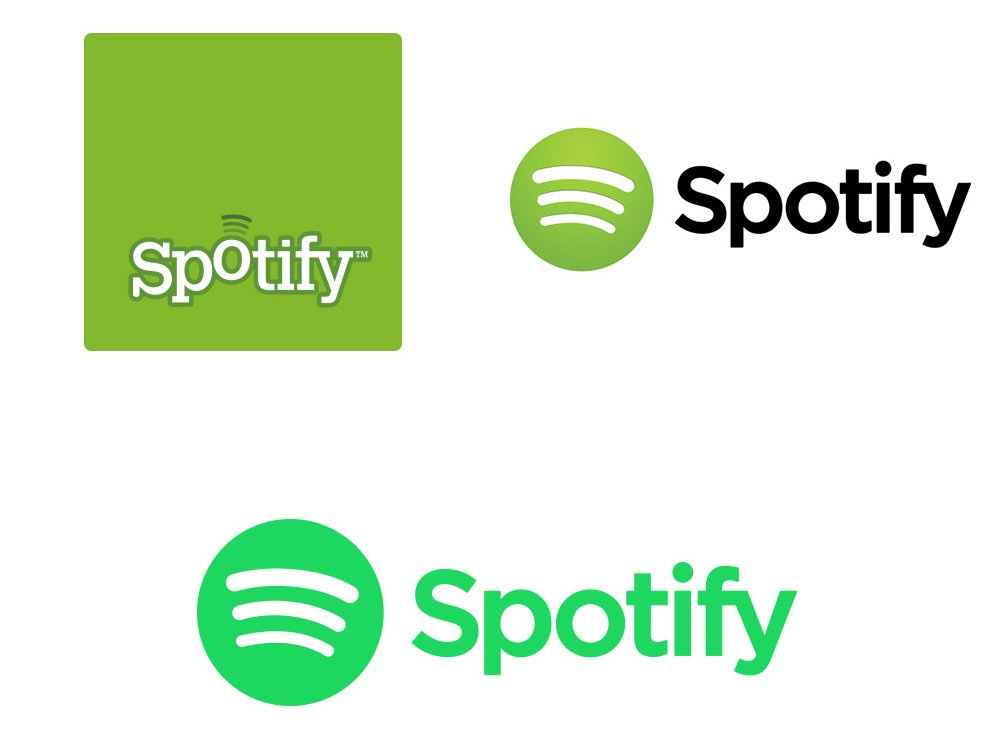
Rebooting the brand
Upgrading Spotify’s ‘dreary broccoli’ green logo to a neon green wasn’t enough to appeal to the visual-loving millennials using its service. Working with Collins in 2015, Spotify took a bold turn in the direction of vibrant duotone colours, photography and contemporary shapes. And it totally worked.
This statement transformation brought Spotify to life and made the brand instantly identifiable, giving it a look that reflected the way music feels.
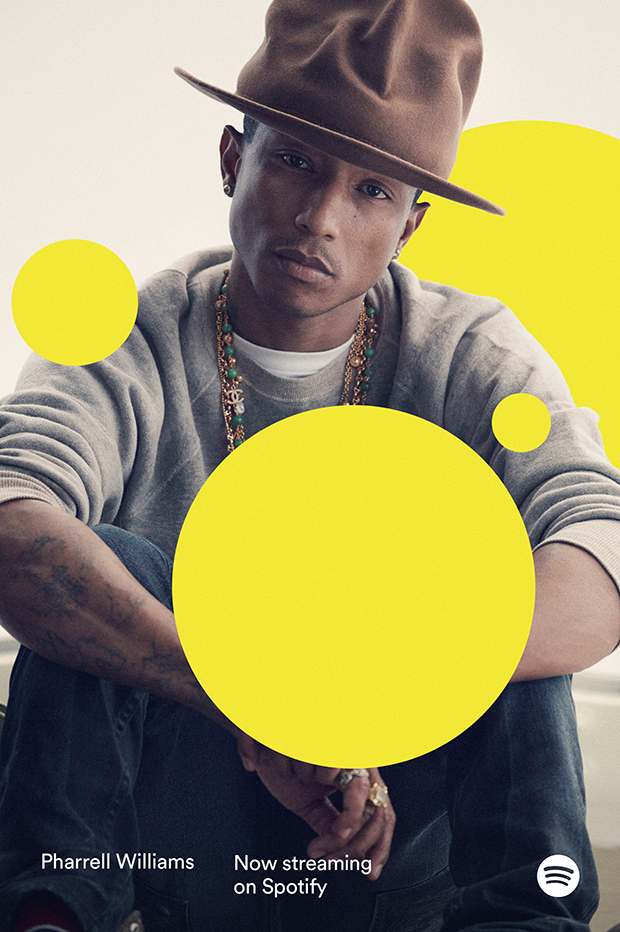
(Images: Collins)
Here’s Collins’ take on it:
“When a song profoundly resonates with you, what happens? You cry. You cheer. You scream. You laugh. Or, as we put it, you burst with emotion. Our brand identity system aimed to be the visual corollary to this “bursting” experience. We also designed a co-creative aspect into the system to enable Spotify to collaborate with artists.”
Spotify was no longer all about music, it was about people.
Cool fact: Spotify’s Director of Experience Design developed ‘The Colorizer’; software that automatically duotones images to make the process easier for designers around the world to brand Spotify content.
2018 Goals campaign
It’s no coincidence that Spotify’s rise to the forefront of music streaming coincided with the brand’s new direction. Almost overnight, Spotify was known as a unique, carefully curated brand that knew its users. But it didn’t end there, the cherry on top of a now very colourful cake was its bold campaigns, most famously, ‘2018 Goals’ where users’ weird, wonderful and hilarious data was anonymously published to the world. Let us remind you…
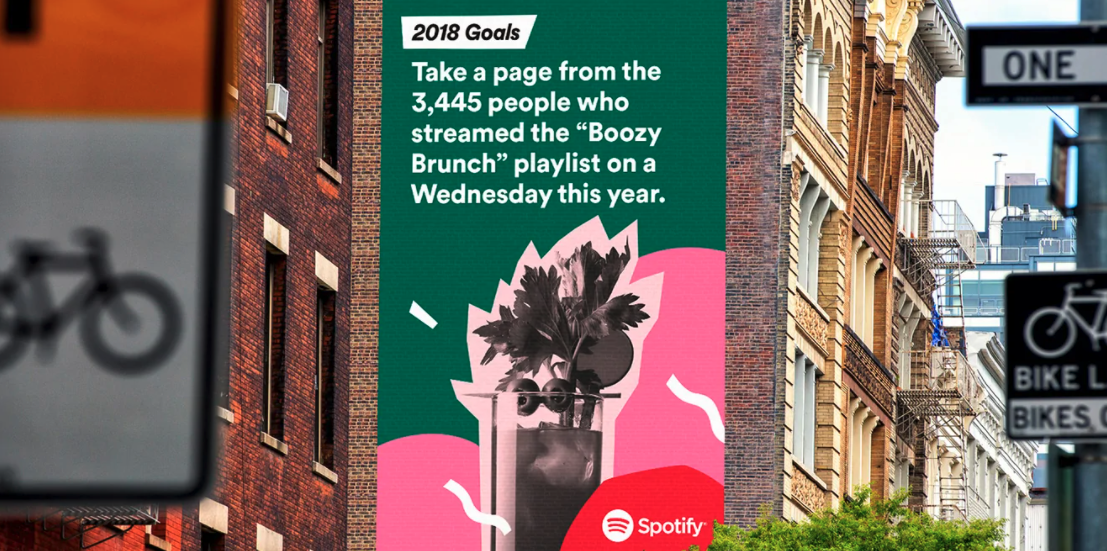
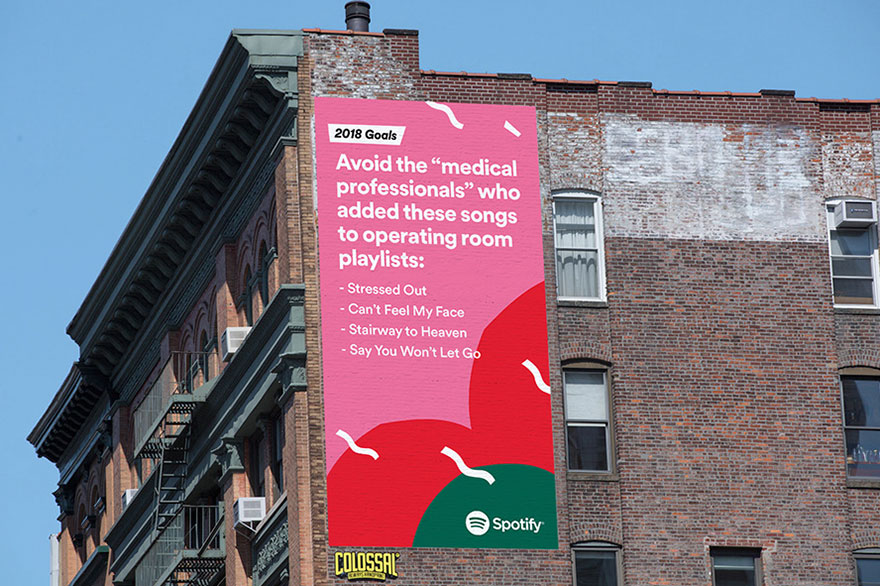
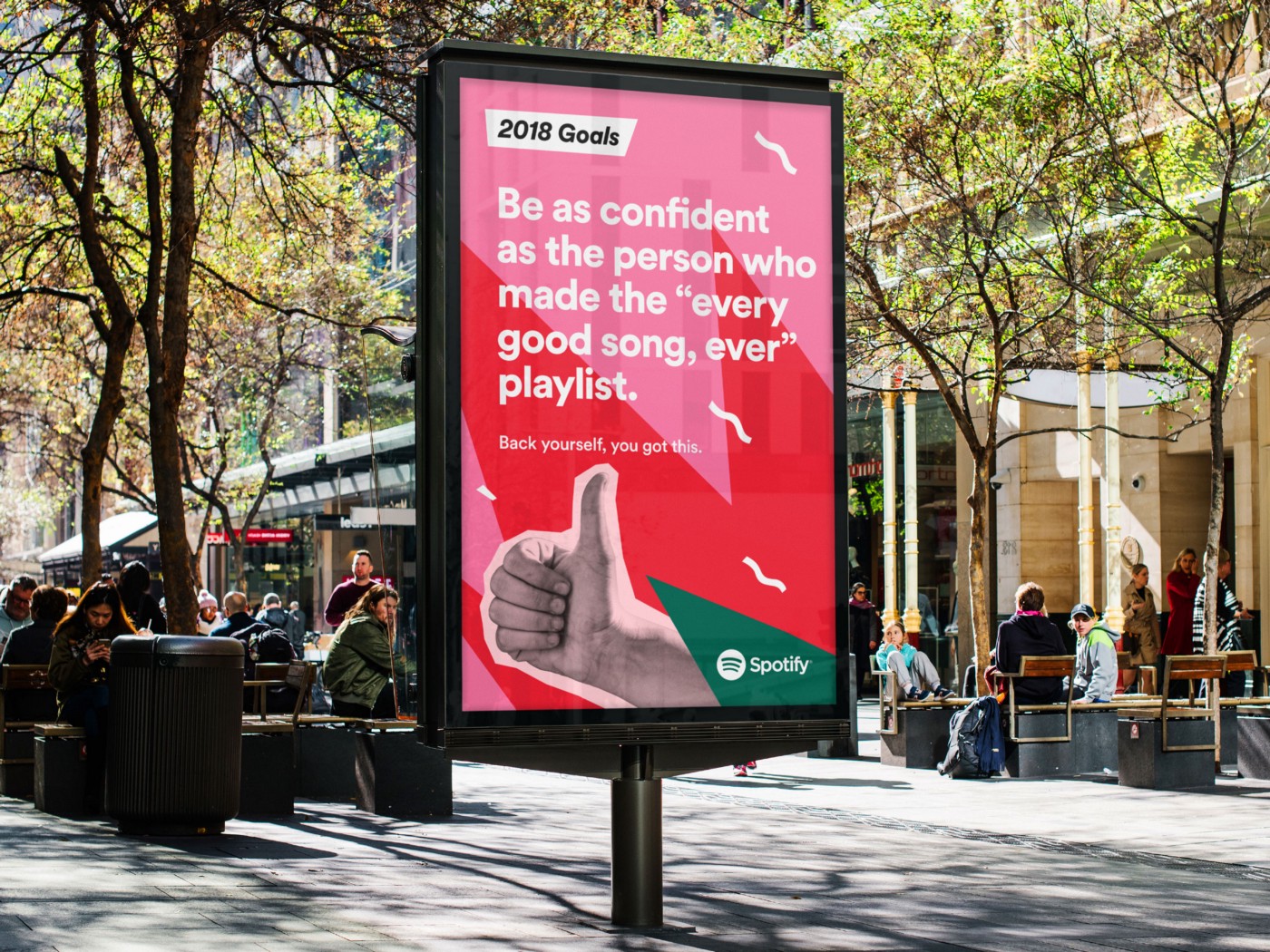
(Images: Adweek, boredpanda, medium)
This campaign did a great deal for Spotify as a brand. It gave it a distinct, established personality with a tone of voice that was reflective of its target market; it stood out amongst competition; it was current and worked well across languages and locations, and it was representative of the personal service it offers. Above all, it perfectly embodied its brand values; innovative, collaborative, sincere, passionate and playful, and if you ever need reminding of these, there’s a Spotify playlist made out of them… genius.

 Slide
Slide

